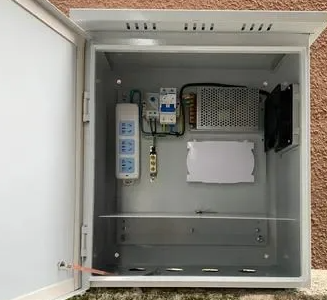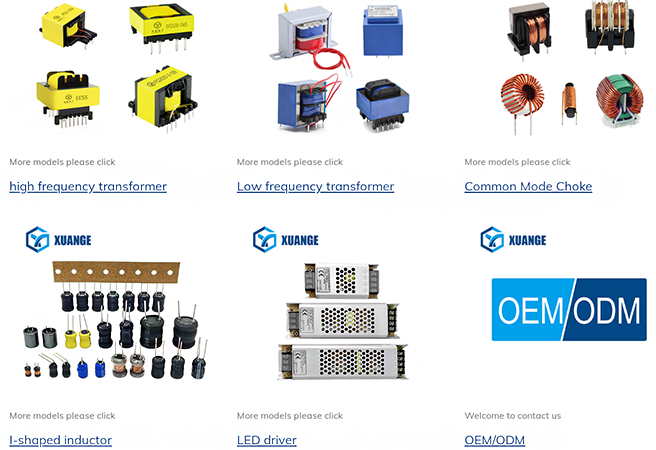First, from the principle
Principle of linear power supply
Linear power supply mainly includes power frequency transformer, output rectifier filter, control circuit, protection circuit and so on
1. Pass the alternating current (AC) through the transformer to reduce the voltage amplitude.
2. After rectifying the rectifier circuit, pulse direct current (DC) is obtained.
3. After filtering, DC voltage with tiny ripple voltage is obtained.
4. To achieve high precision DC voltage, it must be regulated by voltage regulating circuit. A regulating tube in a linear power supply (such as a transistor or integrated circuit) operates in a linear amplifying area to stabilize the output voltage.
switching power supply manufacturer
Principle of switching power supply
Switching power supply mainly includes input grid filter, input rectifier filter, inverter, output rectifier filter, control circuit, protection circuit.
1. Adjust the output voltage by controlling the ratio of on-off and off-time of the switching tube.
2. Convert the input alternating current or direct current into a high-frequency pulse signal.
3. Then through the transformer or inductor to transform and filter, finally get a stable DC output voltage.
Second, from the structure and voltage
Compared with the linear power supply and the switching power supply, the switching power supply is a power supply that works in the switching state, and the negative feedback can change the duty ratio of the power supply on and off according to the change of the load, so as to achieve the purpose of voltage regulation, so the voltage regulation effect of the switching power supply is very good.
The structure of the linear power supply is relatively simple, the power frequency alternating current through the transformer into a low voltage and then connected to a voltage regulator chip on the line, linear power supply has no negative feedback, so it can not adjust the voltage output according to the load change.
Third, from the way of work
The linear power device works in a linear state, that is to say, the power device is always working when he uses it, so it leads to his low work efficiency, generally between 30% and 60%.
The power device of the switching power supply works in the switching state, with small loss and high efficiency, and the efficiency is 70% ~ 85%. The best VICOR modules are said to be more than 95% efficient.
Fourth, voltage output
Switching power supply will use the way of switching the rectified high voltage into a high frequency square wave, and then through the transformer to convert its voltage value, linear power supply is directly converted into other voltage output by the transformer.
Fifth, from the characteristics
Switching power supply light weight, high efficiency, small static loss; The linear power supply has low cost, no high-frequency interference, and higher reliability than the switching power supply. Due to the development of realistic science and technology and the increasing shortage of energy, the energy problem has increasingly become the focus of the world’s most attractive public attention, and will continue to continue. The high efficiency and low cost of industrial products is not only the goal pursued by customers, but also a direction of enterprise development. The future linear power supply will be replaced by switching power supply.
Linear power supply:
High precision: high output voltage stability, low ripple and noise, suitable for applications requiring high output voltage stability.
Low noise: Because of the way linear power supplies work, they produce relatively low electromagnetic interference and noise.
Wide input range: usually has a wide input voltage range, can adapt to different voltage levels of the input power supply.
Low efficiency: the adjustment tube always works in the linear amplification area, which will consume a lot of power and generate more heat, resulting in low efficiency. The efficiency of the general linear power supply is about 50%.
Volume and weight: large transformers and filter capacitors are required to meet the stability requirements of the output voltage, which makes the volume and weight of the linear power supply larger.
Switching power supply:
High efficiency: When the switching power supply is working, the switching tube is in a fully on or completely off state, and the loss is relatively small, so the efficiency is high. General switching power supply efficiency can reach 80% or even higher.
Small size and light weight: Due to the high operating frequency of the switching power supply, smaller energy storage components and transformers can be used, so in the case of the same power output, the volume and weight of the switching power supply is much smaller than the linear power supply.
Good output stability: advanced control technology and feedback circuit are adopted, which can quickly respond to load changes and maintain the stability of output voltage.
Electromagnetic interference: Although the output stability of the switching power supply is good, it will produce certain electromagnetic interference during work, which may affect other electronic equipment.
Six. Application fields
Linear power supply:
It is mainly used in applications where the output voltage stability is very high and the noise and ripple requirements are very low, such as precision instruments, audio amplifiers, medical equipment, etc. In these fields, linear power supply has been widely used because of its high stability and low noise characteristics.
Switching power supply:
Widely used in a variety of electronic equipment, such as computers, communication equipment, industrial control equipment, LED lighting and so on. In these areas, the advantages of high efficiency, small size and light weight of switching power supplies make them the preferred type of power supply.
Post time: Jan-11-2025




